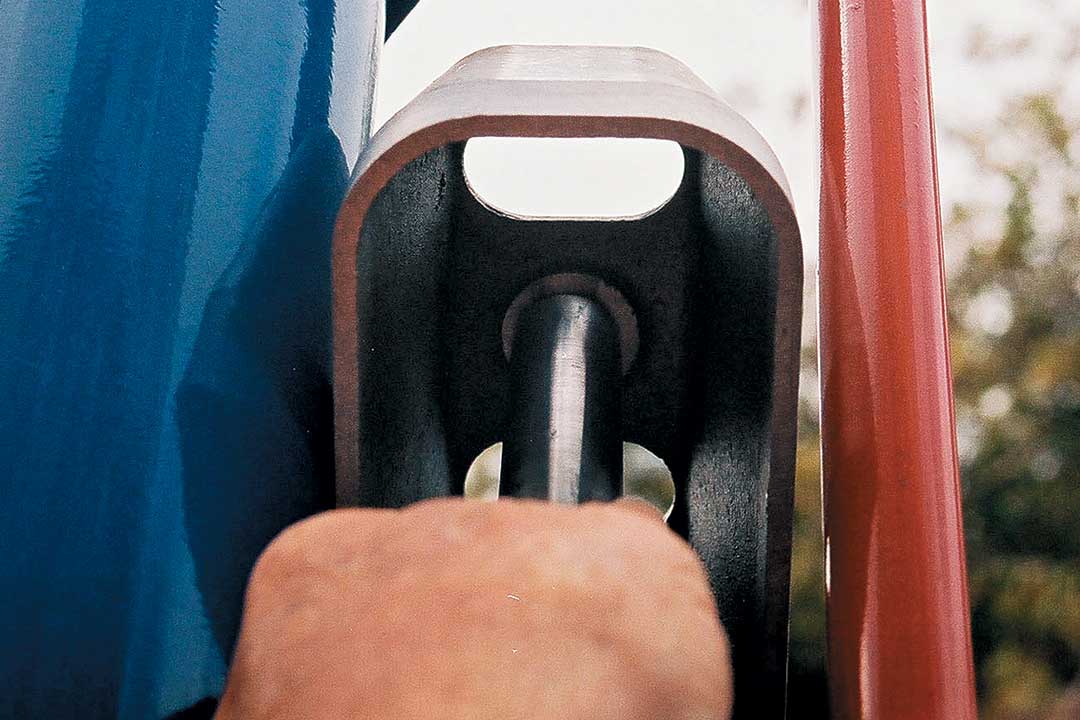Head entrapment on play equipment has the potential to be a life-threatening hazard so Certified Playground Safety Inspectors are instructed to test all completely bound openings for head entrapment.
The phrase “potentially life-threatening hazard” should be significant enough to encourage any CPSI to give this subject serious attention and to assure that proper testing is conducted. It is extremely important to know if your playground testing probes are accurate.
The test requires that the torso probe be inserted into all fully-enclosed spaces. If the torso probe fails to pass through the opening to a depth of four inches, the opening is considered compliant. If the torso probe passes through the opening, the head probe must also pass through or the opening is considered to be a head entrapment hazard.
There are two basic types of probes: the template and the three-dimensional. The three-dimensional probes have an advantage for the novice inspector because the probe is four inches thick so it is easy to determine if the probe passes through the opening to the proper depth. The flat template must be used with a tape measure to assure the proper depth of penetration.
The template and the probe are both 3.5 inches wide by 6.2 inches long. Or are they? Have you actually measured them to find out? Remember, this can be life-threatening so it is critical that the measurements be accurate.
Temperatures Change Things
All materials expand and contract with temperature changes but all materials don’t expand and contract at the same rate. Even paper changes size with weather. One of the first things I remember about taking drafting classes as a landscape architect student was that dimensions shown on drawings always take precedence over scale because the scale is unreliable when reading a plan in the field. A plan drawn at one inch equals 50 feet can change as much as 5 or 6 feet if the temperature and humidity are high. With this background, I decided to test my probes. I was working in Redding, CA, and the temperature was 109 degrees F. I measured the width of the probe and when I got back to my office I put the probe in the freezer and left it overnight. I expected a difference but I was not ready for how much the size had changed.
The probes are rotationally molded plastic so in addition to the expansion and contraction due to temperature, there can also be a significant change in dimension, depending on how the probe is stored. I think most of us store the probes in the trunk of our car or in a steel truck bed tool box. Even in cool weather the temperature in a trunk can reach extreme heat. Remember all of those public service announcements about leaving a child in a locked car? If the probe is stored on its side and heavy items are stacked on top, the combination of heat and weight can flatten the probe. If the probe is stored vertically, the probe can slump and become wider.
The templates are solid plastic so they don’t expand and contract as much as the rotationally molded plastic probes and can be a better choice, but both the probes and the templates are field testing equipment, not laboratory equipment. Their accuracy can be questionable. The flat templates take less space for storage under the seat of your truck and they don’t have the expansion and deformation problems that the rotationally molded probes have but there is a third option that is much more accurate but also more expensive—the three-dimensional probes, which are available in aluminum.
If the fully-enclosed ridged opening is just barely large enough to allow the probe to pass it could be that the probe is too small. If the opening is just slightly smaller than the width of the probe, it could be the probe has expanded, giving you a false compliant reading. A slight variation can cause a significant expense for the owner of the equipment who has to modify or replace the equipment based on your evaluation. A trial can be won or lost based on the proper use of the probes. Before you declare a playground to be non-compliant due to head entrapment, verify all close results with a set of calipers.
If an opening passes or fails by a small margin using field testing probes it is extremely important to actually measure the opening before declaring a “Life-Threatening Hazard.” If you do a significant number of playground inspections or if you are providing playground safety inspections as a consultant, it might be worth the expense to invest in a good set of aluminum test probes and gauges.
This article is taken from this site; Playground Professional eMagazine
Published by David Spease



